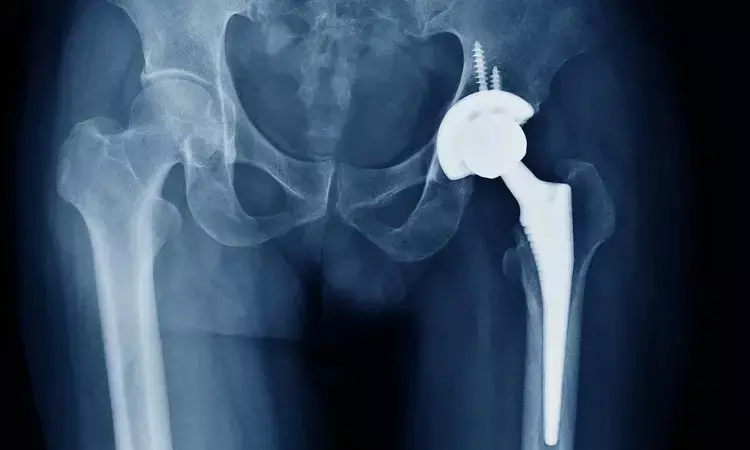- Home
- Medical news & Guidelines
- Anesthesiology
- Cardiology and CTVS
- Critical Care
- Dentistry
- Dermatology
- Diabetes and Endocrinology
- ENT
- Gastroenterology
- Medicine
- Nephrology
- Neurology
- Obstretics-Gynaecology
- Oncology
- Ophthalmology
- Orthopaedics
- Pediatrics-Neonatology
- Psychiatry
- Pulmonology
- Radiology
- Surgery
- Urology
- Laboratory Medicine
- Diet
- Nursing
- Paramedical
- Physiotherapy
- Health news
- Fact Check
- Bone Health Fact Check
- Brain Health Fact Check
- Cancer Related Fact Check
- Child Care Fact Check
- Dental and oral health fact check
- Diabetes and metabolic health fact check
- Diet and Nutrition Fact Check
- Eye and ENT Care Fact Check
- Fitness fact check
- Gut health fact check
- Heart health fact check
- Kidney health fact check
- Medical education fact check
- Men's health fact check
- Respiratory fact check
- Skin and hair care fact check
- Vaccine and Immunization fact check
- Women's health fact check
- AYUSH
- State News
- Andaman and Nicobar Islands
- Andhra Pradesh
- Arunachal Pradesh
- Assam
- Bihar
- Chandigarh
- Chattisgarh
- Dadra and Nagar Haveli
- Daman and Diu
- Delhi
- Goa
- Gujarat
- Haryana
- Himachal Pradesh
- Jammu & Kashmir
- Jharkhand
- Karnataka
- Kerala
- Ladakh
- Lakshadweep
- Madhya Pradesh
- Maharashtra
- Manipur
- Meghalaya
- Mizoram
- Nagaland
- Odisha
- Puducherry
- Punjab
- Rajasthan
- Sikkim
- Tamil Nadu
- Telangana
- Tripura
- Uttar Pradesh
- Uttrakhand
- West Bengal
- Medical Education
- Industry
Gout patients may have increased risk of surgical complications after total hip arthroplasty, claims study

A recent retrospective analysis published in Clinics of Orthopedic Surgery journal found that primary total hip arthroplasty (THA) in gout patients was associated with an increased risk of multiple medical complications, such as deep vein thrombosis (DVT) and acute kidney injury (AKI), as well as complications following surgery, such as wounds and periprosthetic joint infection (PJI).
The most prevalent kind of inflammatory arthritis in the world is gout, which puts the elderly population in danger because gout risk increases with age. The management of flare-ups of gout consists of urate-lowering therapy (ULT) after early anti-inflammatory medication. Since gout causes an inflammatory response, it is crucial to determine how gout affects the results of orthopedic surgery. Advanced hip problems can benefit greatly from THA surgery, which is in increasing demand in the US. On the other hand, nothing is clear about how gout affects primary THA results in sizable cohorts. Zhichang Zhang and colleagues undertook this study with the primary goal of filling this gap by examining problems that arise after THA in patients who have or do not have gout.
Using a national insurance database, patients with gout records in the 2 years before their first THA and who also had at least 2 years of follow-up were found and compared to a 5:1 matched control. 32,466 gout patients and 161,514 non-gout patients underwent total hip arthroplasty (THA). For surgical problems lasting up to 2 years and medical issues lasting up to 90 days, multivariable logistic regression analyses were performed. Moreover, the records of 90-day ED visits and inpatient readmissions were maintained.
When compared to non-gout patients, gout patients had increased incidence of deep vein thrombosis, transfusions, acute renal damage, and urinary tract infections. Additionally, gout patients had increased incidences of pulmonary embolism.
The patients with gout had higher rates of surgical complications, including infections in the periprosthetic joint and wound problems. Patients with gout had a higher chance of revision for up to 90 days, a year, and two years. Also, patients with gout also had a higher chance of dislocation over the first 90 days and a year, but not for the first two.
There was no discernible variation in the incidence of periprosthetic fracture or aseptic loosening. The patients with gout also showed an increased risk of readmission and 90-day ED visits. Overall, patients with gout who have primary total hip arthroplasty (THA) are more likely to experience various surgical and medical problems.
Source:
Zhang, Z., Yang, H., Xu, Z., Chi, J., & Cui, Q. (2024). Total Hip Arthroplasty Outcomes in Patients with Gout: A Retrospective Analysis of Matched Large Cohorts. In Clinics in Orthopedic Surgery (Vol. 16, Issue 4, p. 542). XMLink. https://doi.org/10.4055/cios24039
Neuroscience Masters graduate
Jacinthlyn Sylvia, a Neuroscience Master's graduate from Chennai has worked extensively in deciphering the neurobiology of cognition and motor control in aging. She also has spread-out exposure to Neurosurgery from her Bachelor’s. She is currently involved in active Neuro-Oncology research. She is an upcoming neuroscientist with a fiery passion for writing. Her news cover at Medical Dialogues feature recent discoveries and updates from the healthcare and biomedical research fields. She can be reached at editorial@medicaldialogues.in
Dr Kamal Kant Kohli-MBBS, DTCD- a chest specialist with more than 30 years of practice and a flair for writing clinical articles, Dr Kamal Kant Kohli joined Medical Dialogues as a Chief Editor of Medical News. Besides writing articles, as an editor, he proofreads and verifies all the medical content published on Medical Dialogues including those coming from journals, studies,medical conferences,guidelines etc. Email: drkohli@medicaldialogues.in. Contact no. 011-43720751


